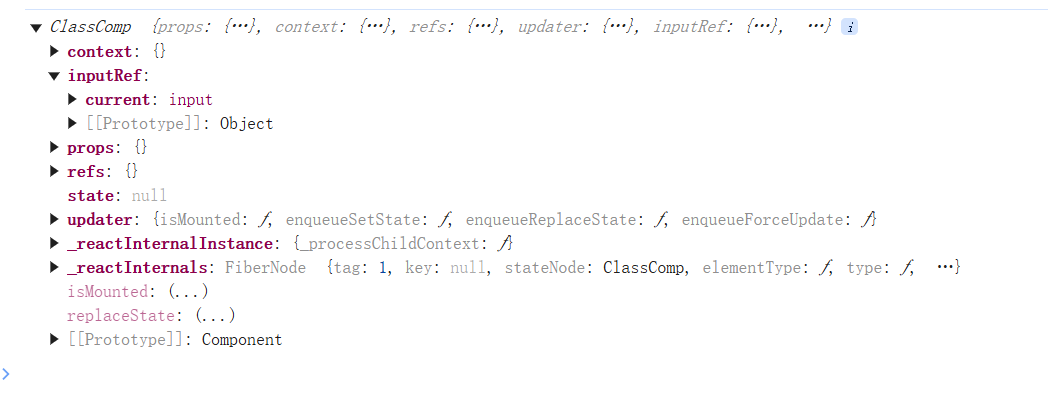如何使用React,透传各类组件能力/属性?
在23年的时候,我主要使用的框架还是Vue,当时写了一篇“如何二次封装一个Vue3组件库?”的文章,里面涉及了一些如何使用Vue透传组件能力的方法。在我24年接触React之后,我发现这种扩展组件能力的方式有一个专门的术语:高阶组件(HOC)。但在Vue开发中,这个词很少听到。
这篇文章中会描述使用React透传组件各类能力的方式。这些透传方式经常在高阶组件中使用,但并不只有高阶组件会用到它们。React有类式组件和函数式组件两种,我们会分别介绍。
问题描述
首先我们列举下简单的场景,说明我们为什么需要透传组件能力。这里以函数式组件为例。
// 问题示例,这段代码是不正确的
import { useRef } from "react";
function FunComp() {
return <input />;
}
function FunComp2() {
return <div><input /></div>;
}
function App() {
const refFun = useRef(null);
const handleClick = () => {
console.log("click");
};
const handleClickFocus = () => {
if (refFun.current) refFun.current?.focus();
};
return (
<div>
<FunComp
ref={refFun}
style={{ background: "red" }}
onClick={handleClick}
/>
<div onClick={handleClickFocus}>点我聚焦</div>
</div>
);
}假设我们想创建一个自定义组件(FunComp),里面封装了另外一个组件(例如这里的input),希望使用这个自定义组件增强原组件的能力,或者预先设定一些样式等等,自定义组件可能直接返回该组件,也可能被处理过(例如FunComp2被div包裹)。
虽然原组件被封装了,但是还希望原组件的能力直接被透传给自定义组件。例如我们在自定义组件上操作props, 事件,ref等,希望就像操作原组件一样。在Vue3中,很多能力可以直接使用Attributes继承特性,但是React却没有,需要我们自己实现。
函数式组件-透传Props和事件
在函数式组件中,prop实际上就是组件的入参,且所有prop是被包含在同一个参数中的,因此很容易透传给子组件。且事件本身实际上也是prop,可以一并透传。
function FunComp(props) {
return <input {...props} />;
}
function App() {
const handleClick = () => {
console.log("click");
};
return (
<div>
<FunComp style={{ background: "red" }} onClick={handleClick} />
</div>
);
}使用{...props}可以实现透传Props和事件。上述例子中,子组件可以接收到样式属性和事件。
函数式组件-透传子节点
React中有一个特殊的属性children,表示父组件中包含的子节点。这也是需要透传的。
直接渲染children属性
function FunComp(props) {
return <div>左 {props.children} 右</div>;
}
function App() {
return (
<div>
<FunComp>子节点</FunComp>
<FunComp />
</div>
);
}可以看到,直接渲染props.children,即可透传子节点。即使没有子节点,这种透传也是没问题的。如果子组件本身已经透传了props,透传的对象又是
使用透传Props实现透传子节点
既然children也是Props之一,那么直接使用透传Props的方法是否可以呢? 我们试一下。
function FunComp(props) {
return <div>左 {props.children} 右</div>;
}
function FunComp1(props) {
return <div {...props} />;
}
function FunComp2(props) {
return <FunComp {...props} />;
}
function App() {
return (
<div>
<FunComp1>子节点</FunComp1>
<FunComp1 children="子节点" />
<FunComp2>子节点</FunComp2>
<FunComp2 children="子节点" />
</div>
);
}
/* 页面效果
子节点
子节点
左 子节点 右
左 子节点 右
*/FunComp1包含的子组件是一个非自定义组件div,FunComp2包含的时自定义组件FunComp,可以看到我们使用{...props}进行Props透传,children实际上都被成功渲染了,甚至对父组件直接设置children属性也可以。
冲突场景
既然Props透传即可实现,那我们为什么还要强调一遍直接渲染props.children呢,因为有时候子组件不只渲染children,还有其它内容。如果Props和直接设置的子节点冲突,那么还是直接设置的子节点优先级更高。
function FunComp(props) {
return <div {...props}>左 {props.children} 右</div>;
}
function App() {
return (
<div>
<FunComp>子节点</FunComp>
<FunComp children="子节点" />
</div>
);
}
/* 页面效果
左 子节点 右
左 子节点 右
*/我们同时透传了Props,也直接设置了子节点(其中包含其它内容),最后直接设置的子元素生效了。
函数式组件-透传ref
使用ref可以操作访问DOM节点,获取DOM元素上的属性或者方法。ref也是可以透传的。
透传全部属性
import { forwardRef, useRef } from "react";
const FunComp = forwardRef(function (props, ref) {
return <input ref={ref} />;
});
function App() {
const inputRef = useRef(null);
function handleClick() {
console.log(inputRef.current?.style);
inputRef.current?.focus();
}
return (
<div>
<FunComp ref={inputRef} />
<div onClick={handleClick}>点击聚焦</div>
</div>
);
}使用forwardRef,可以透传ref属性。我们尝试了聚焦输入框,以及console输出style属性,都是正常生效的。
仅暴露部分属性
有时候我们不想暴露全部属性,仅希望暴露我们希望用户使用的部分属性,使用useImperativeHandle可以做到。
import { forwardRef, useRef, useImperativeHandle } from "react";
const FunComp = forwardRef(function (props, ref) {
const inputRef = useRef(null);
useImperativeHandle(ref, () => {
return {
focus() {
inputRef.current?.focus();
},
};
});
return <input ref={inputRef} />;
});
function App() {
const inputRef = useRef(null);
function handleClick() {
// 无法输出
console.log(inputRef.current?.style);
inputRef.current?.focus();
}
return (
<div>
<FunComp ref={inputRef} />
<div onClick={handleClick}>点击聚焦</div>
</div>
);
}我们仅向外层的ref暴露了focus,因此外层组件focus可以正常调用,但是却拿不到style属性了。使用这种形式还可以对方法进行额外的包装,或者创建一些新的ref方法。
在React19中,不再需要forwardRef了,ref直接作为一个prop属性访问。可以看最后的参考文档。
类式组件-透传Props和事件
类式组件是另一种创建React组件的方法,被React标记为过时的API,但是在老代码中还经常被使用到。我们先来看一下,在类式组件中,如何Props和事件。
import { Component } from "react";
class ClassComp extends Component {
render() {
return <div {...this.props}>你好</div>;
}
}
class App extends Component {
render() {
const handleClick = () => {
console.log("click");
};
return <ClassComp style={{ background: "red" }} onClick={handleClick} />;
}
}通过上述代码可以看到,在类式组件中透传Props和事件与函数式组件一致,使用{...props}可以实现透传Props和事件。
类式组件-透传子节点
来看看类式组件是如何透传子节点的。
直接渲染children属性
import { Component } from "react";
class ClassComp extends Component {
render() {
return <div>左 {this.props.children} 右</div>;
}
}
class App extends Component {
render() {
return (
<div>
<ClassComp>子节点</ClassComp>
<ClassComp />
</div>
);
}
}代码依然与类式组件基本一致,直接渲染{this.props.children}即可。
使用透传Props实现透传子节点
上一节讲到的透传Props,同样可以实现透传子节点。
import { Component } from "react";
class ClassComp extends Component {
render() {
return <div>左 {this.props.children} 右</div>;
}
}
class ClassComp1 extends Component {
render() {
return <div {...this.props} />;
}
}
class ClassComp2 extends Component {
render() {
return <ClassComp {...this.props} />;
}
}
class App extends Component {
render() {
return (
<div>
<ClassComp1>子节点</ClassComp1>
<ClassComp1 children="子节点" />
<ClassComp2>子节点</ClassComp2>
<ClassComp2 children="子节点" />
</div>
);
}
}
/* 页面效果
子节点
子节点
左 子节点 右
左 子节点 右
*/与函数式组件一致,Props透传时也会透传children,甚至对父组件直接设置children属性也可以透传。至于Props和直接设置的子节点冲突的场景也与函数式组件一致,这里就不举例了。
类式组件-透传ref
类式组件透传Ref的形式就与函数式组件不同了。具体类式组件有不同的实现方式,我们分别介绍下:
暴露部分属性
import { Component, createRef } from "react";
class ClassComp extends Component {
inputRef = createRef();
focus() {
this.inputRef.current?.focus();
}
render() {
return <input ref={this.inputRef} />;
}
}
class App extends Component {
classRef = createRef();
handleClick() {
console.log(this.classRef.current);
this.classRef.current?.focus();
}
render() {
return (
<div>
<ClassComp ref={this.classRef} />
<div onClick={() => this.handleClick()}>点击聚焦</div>
</div>
);
}
}通过代码可以看到,在类式组件中,不需要通过forwardRef等方法就可以使用ref访问子组件,且能执行子组件类中的方法。所以我们只要把需要暴露的内容包装成一个方法,那么就可以让父组件获取到。

通过输出的图可以看到,不仅能拿到方法,还能拿到属性和其它很多东西。
拿到子组件内部的ref
既然可以拿到子组件类中和属性也能拿到。那么父组件可以直接拿到子组件内部的ref属性inputRef,父组件可以直接拿到它来执行内部的方法。
import { Component, createRef } from "react";
class ClassComp extends Component {
inputRef = createRef();
render() {
return <input ref={this.inputRef} />;
}
}
class App extends Component {
classRef = createRef();
handleClick() {
this.classRef.current?.inputRef?.current?.focus();
}
render() {
return (
<div>
<ClassComp ref={this.classRef} />
<div onClick={() => this.handleClick()}>点击聚焦</div>
</div>
);
}
}通过代码可以看到,子组件不需要透出方法了,父组件直接拿到子组件的inputRef,想执行什么就执行什么,做到了真正的“透传”。绑定ref还有另一种方式,这里也介绍一下:
import { Component, createRef } from "react";
class ClassComp extends Component {
render() {
return <input ref="inputRef" />;
}
}
class App extends Component {
classRef = createRef();
handleClick() {
this.classRef.current?.refs?.inputRef?.focus();
}
render() {
return (
<div>
<ClassComp ref={this.classRef} />
<div onClick={() => this.handleClick()}>点击聚焦</div>
</div>
);
}
}ref属性的值可以直接是一个字符串,通过this.refs可以拿到使用字符串形式绑定的ref。
总结
函数式组件与类式组件在Props和事件透传的方式基本一致,但是ref透传的区别较大。直接对比的话,好像类式组件的透传能力更强一些,但是它把组件内部所有内容全暴露在外,违反了封装的原则,子组件内部的改动很容易影响父组件,不是一个好的设计。参考文档中还给出了使用TypeScript时,透传参数如何判断类型的文档。
在React19版本中,ref属性也变成了prop,仅通过透传Props,就能实现透传组件大部分能力了。
参考
- 如何二次封装一个Vue3组件库?
https://jzplp.github.io/2023/component-lib.html - Vue3 透传Attributes
https://cn.vuejs.org/guide/components/attrs - React 使用ref操作DOM
https://zh-hans.react.dev/learn/manipulating-the-dom-with-refs - React omponent
https://zh-hans.react.dev/reference/react/Component - ref用法
https://blog.csdn.net/qq_47305413/article/details/136059266 - React v19 ref作为一个属性
https://zh-hans.react.dev/blog/2024/12/05/react-19#ref-as-a-prop - Useful Patterns by Use Case. React TypeScript Cheatsheet
https://react-typescript-cheatsheet.netlify.app/docs/advanced/patterns_by_usecase